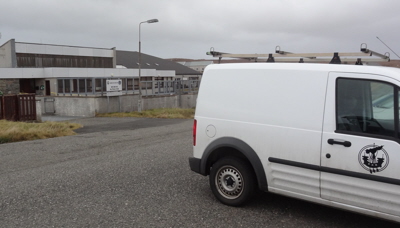
Mink cull blamed for plague of rats
3 December 2016
A plague of rats in the Western Isles is being blamed on the success of a £5 million cull to eradicate alien mink.
Rodent numbers have exploded in the recent years with the vermin crawling into people’s homes.
This week a primary school in Lewis was closed after rats got inside the building.
The comhairle acted swiftly to give the premises a deep clean so children could return to lessons.
But the local authority itself has been hit with parts of its Stornoway headquarters having been affected by rats from a nearby field said a councillor.
Mink first found its way into the islands’ environment in the 1960s and 70s, as
refugee from fur farms.
Numbers of the escapees boomed and threatened the area’s biodiversity by eating nesting wader birds’ eggs and preying on local wildlife.
Birds at serious risk are Arctic tern, common tern, little tern, black throated diver, red throated diver, corncrake, dunlin and ringed plover.
In recent years 2,200 mink have been trapped and removed from Lewis, Harris and Uist
in a Scottish Natural Heritage (SNH) sponsored scheme which islanders say co-
Rats also causes serious damage to cars by chewing through wiring and leaving dirt and smell behind.
But SNH which runs the mink cull said the booming rat numbers are part of nature’s natural cycle.
David Maclennan, SNH’s Outer Hebrides’ manager, said that even at their “absolute height there were not enough mink to make a major impact on the rat population.”
He added: “Rats have been here for thousands of years and their populations fluctuate naturally.”
“In the last couple of years there has been a high density of rats in some parts of the islands which is of obvious concern to local communities.”
Sources of food and shelter are key factors in attracting rats around houses, he highlighted.
“It is not just as simple as putting down poison and traps. People should consider the environment around their area and make sure it is not attractive for rats to live and thrive in,“ said Mr Maclennan.
The isle of Barra also suffers from a rat problem yet mink were never present there emphasised SNH.
Uig school was closed for rat control treatment